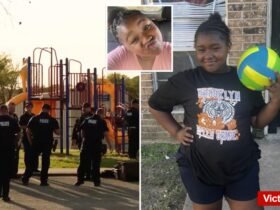Highlights
This article is available as a YouTube podcast.
Do criminals have a communication network?
Criminal offenders tend to gravitate towards people, places, and things perceived as easier targets with more successful or lucrative payoffs. At times, that requires an exchange of information.
If crimes reported to law enforcement (most aren’t) are down, according to the FBI, is there less victimization, or are crime patterns shifting? Are criminals discovering communication networks that encourage alternative forms of victimization?
There is a dichotomy between formal law enforcement intelligence networks and decentralized criminal networks that function as effectively, if not more so, at disseminating info quickly.
Author
Leonard Adam Sipes, Jr.
Former Senior Specialist for Crime Prevention and Statistics for the Department of Justice’s clearinghouse. Former Director of Information Services, National Crime Prevention Council. Former Adjunct Associate Professor of Criminology and Public Affairs-University of Maryland, University College. Former police officer. Retired federal senior spokesperson.
Former advisor to presidential and gubernatorial campaigns. Former advisor to the “McGruff-Take a Bite Out of Crime” national media campaign. Produced successful state anti-crime media campaigns.
Thirty-five years of directing award-winning (50+) public relations for national and state criminal justice agencies. Interviewed thousands of times by every national news outlet, often with a focus on crime statistics and research. Created the first state and federal podcasting series. Produced a unique and emulated style of government proactive public relations.
Certificate of Advanced Study-The Johns Hopkins University.
Author of ”Success With The Media: Everything You Need To Survive Reporters and Your Organization” available at Amazon and additional bookstores.
Crime in America.Net-“Trusted Crime Data, Made Clear.”
Quoted by The Associated Press, USA Today, A&E Television, the nationally syndicated Armstrong Williams Television Show (27 times), Department of Justice documents, US Supreme Court briefs, C-SPAN, the National Institute of Health, college and university online libraries, multiple books and journal articles, The Huffington Post, JAMA, The National Institute of Corrections, The Office of Juvenile Justice And Delinquency Prevention, The Bureau of Justice Assistance, Gartner Consulting, The Maryland Crime Victims Resource Center, The Marshall Project, The Heritage Foundation via Congressional testimony, Law Enforcement Today, Law Officer.Com, Blue Magazine, Corections.Com, Prison Legal News, The Hill (newspaper of Congress), the Journal of Offender Monitoring, Inside Edition Television, Yomiuri Shimbun (Asia’s largest newspaper), LeFigaro (France’s oldest newspaper), Oxygen and allied publications, Forbes, Newsweek, The Economist, The Toronto Sun, Homeland Security Digital Library, The ABA Journal, The Daily Express (UK) The Harvard Political Review, The Millennial Source, The Federalist Society, Lifewire, The Beccaria Portal On Crime (Europe), The European Journal of Criminology, and many additional publications.
Sign up for notice of new articles on the front page of this site.
A comprehensive overview of crime for recent years is available at Violent and Property Crime Rates In The U.S.
Article
I hosted a television show in Washington, D.C., addressing criminal use of drugs with two former offenders with significant drug and crime histories. They were now sober, productive members of society.
They wanted me to fully understand what hard drug use really meant within the offender community. They told me a story about bad heroin that was laced with fentanyl. People were either getting very sick or dying from ingesting the drugs. When chased by the police, they discarded a significant amount of the bad heroin in a community in multiple places. Police couldn’t find the drugs.
So what happened? Word got out through the media via a police warning, resulting in a multitude of addicts looking for the discarded heroin. They didn’t care about the risks. They just wanted access to free drugs. They needed help in finding them. They contacted others.
The moral of the story was how desperate drug offenders are that they would risk their lives for a free fix.
But to me, the most important element was how multiple addicts communicated with each other via the media and other means (email, phone calls, social media) to prompt a multitude of people to search a neighborhood for free drugs, regardless of the danger.
There seemed to be a criminal communication network.
Multiple Offenders
According to data from the FBI and the Bureau of Justice Statistics, the frequency of multiple offender crimes varies significantly. For example, most rapes involve lone criminals whereas organized crime or gang activity involves many. The starting point for robberies is 50 percent. The starting point for burglaries and vehicle thefts is approximately 60 percent.
However, the aftermath of crimes committed for monetary gain often involves other individuals who fence or purchase stolen property. Vehicles are often stolen for use in other crimes, often with multiple offenders. Drug sales are inherently group activities.
Crime Patterns Change Through Communications
Crime patterns change constantly, and I’m not sure that’s reflected in official crime statistics.
The Kia Boys-Vehicle Theft Explodes
“Kia Boys” refers to a trend of young people, often teenagers, stealing Kia and Hyundai vehicles, particularly those manufactured between 2011 and 2022. These vehicles are vulnerable due to their lack of engine immobilizers and easily bypassed ignition systems. The trend gained notoriety after a July 2022 TikTok video demonstrated how easily these vehicles can be stolen with everyday tools.
Vehicle theft rates were astoundingly high for years until recently. Thefts were also exacerbated by keyless ignitions and devices to mimic them bought on the dark web.
What form of communication exists that leads thousands of criminals to discover that it’s easy to steal certain brands of vehicles? Yes, there was a video on the topic. Yes, the media picked up the story.
But in this day of thousands of channels through social and mainstream media, how many of you are aware of the possibilities for criminal gain?
USA Today: Stick-Up At The Cellphone Store: USA’s New Heists Go After iPhones And Not Bank Vaults.
“He leads the employee to a safe in the back and orders him to open it. But it’s not stacks of cash he’s after. Today’s stickup artist is after something else: smartphones.”
“The trio cleans out the safe and leaves the store in Owings Mills, Maryland, with a grand total of $48,767 worth of Apple and Samsung Galaxy devices— 76 in total, according to federal court filings. They also take $322 from the store register.”
“It’s the final heist in a spree that’s seen the robbers take roughly $120,000 worth of stolen phones across four stores around Baltimore, according to the U.S. Attorney’s Office. The case out of Maryland is the latest in what criminology experts and law enforcement see as the modern-day form of bank robbery— with significantly higher takes. In the United States, bank robbers net just over $4,000 per robbery, according to FBI statistics.”
“If noted gangster John Dillinger were alive today, he’d be robbing cellphone stores instead of banks.”
Again, who’s disseminating information that would lead to diminishing bank robberies and an increase in phone store robberies? How do criminals know when it’s time to switch?
Shifting Crime–Per FBI-Cybercrimes Almost Double-37 Billion In Losses Since 2019
There have been 37 billion dollars in cybercrime losses since 2019. These crimes cost Americans far more financially and emotionally than street crimes or burglaries-larcenies per the FBI.
Per the Bureau of Justice Statistics of the USDOJ, 23 million persons were victims of identity theft during the prior 12 months in 2023, costing 15.1 billion dollars. This is numerically (and financially) far more than the 4 million victims (and 14 billion in losses) from 2019 to 2023 identified by the FBI for overall cybercrimes. The 23 million crime identity theft victims are also far more than the 14 million general crime victims identified by the FBI in 2022.
It doesn’t take a lot of knowledge to shift from street victimization to identity theft. No one expects street criminals to learn coding and go onto the dark web. However, buying a burner phone and making calls to the vulnerable (many times older Americans) can be done by anyone.
If crimes reported to law enforcement are down per the FBI, is there less victimization, or are patterns shifting? Yes, many identity theft and fraud offenders are offshore, so comparisons can be tricky.
Shifting Crime Patterns-Older Americans
Vulnerability also comes into play when considering the high rate of fraud or burglaries against the elderly. The number of elderly victims has risen at an alarming rate, while the loss amounts are even more staggering. In 2021, over 92,000 victims over the age of 60 reported losses of $1.7 billion to the FBI. This represents a 74 percent increase in losses over those reported in 2020.
Combining the 61-65 and the 66+ age groups, it’s clear that older Americans have high numbers (when compared to other age groups) for burglary, counterfeiting and forgery, destruction/damage/vandalism, embezzlement, fraud, larceny, theft, and motor vehicle theft per the FBI.
How is the knowledge of fleecing older individuals obtained? Traditionally, older Americans had lower rates of property crime.
How Do Criminals Communicate?
Some readers may think that it’s a silly question. So a video platform posts media on how easy it is to steal certain brands of cars, and vehicle thefts skyrocket. Question answered.
Much of today’s violence often starts on social media with opposing gangs or crews or people insulting each other. Question answered.
Thefts of catalytic converters weren’t on the radar of law enforcement until the mainstream media started publishing stories, and the issue suddenly went national. Question answered.
But the bottom line is that criminal offenders “do” communicate with each other.
Criminology has often addressed offenders in prison schooling each other on how to commit new forms of crime.
Criminals use encrypted channels like Telegram and Signal to plan, execute, and discuss operations without being detected by law enforcement. We have digital companies making privacy a hallmark of their operations, thus offering secure communications.
Criminals use the internet to contact each other, socialize, and conduct business, often using everyday applications. They also use criminal forums within the deep web or the Darknet to communicate.
But even street-level offenders who wouldn’t know the Darknet from the stock market exchange information, and that could change the dynamics of crime. There are endless conversations between people willing to commit crimes. From my days of being the senior specialist for crime prevention for the USDOJ’s clearinghouse decades ago, it was known that crimes of opportunity frequently present themselves. Criminals often need assistance in committing the crime or fencing stolen goods.
Some researchers point to the violent and aggressive lyrics found in certain subgenres like gangsta rap and drill music as potentially influencing behavior. Studies suggest that exposure to violent lyrics can increase aggressive thoughts and feelings of hostility, particularly in youth. There are increasing instances of rap lyrics being used as evidence in criminal trials, particularly in cases involving gang activity.
Criminals have been known to use voice chat and messaging functions in online video games (e.g., Call of Duty, Fortnite) to avoid detection. Law enforcement has discovered criminal conversations taking place in these ecosystems, especially among youth gangs.
In neighborhoods with a strong gang presence or criminal subculture, word spreads rapidly through friends, family, or neighbors. This type of informal social communication helps identify targets (the elderly, empty homes, delivery routes) or share tactics (like evading police).
Criminals share tips on how to exploit Uber, DoorDash, or Amazon delivery systems—e.g., targeting unattended drop-offs or using app info to track driver movements. There’s also evidence that criminals discuss which services are easier to defraud.
Prison inmates often communicate with outside associates using contraband cellphones. Coordinated operations—including hits, fraud, or drug deliveries—can originate from behind bars.
Many inmates use encrypted messaging apps through these phones. Telegram groups, Facebook Marketplace, WhatsApp, Craigslist, and Instagram DMs are used for:
Selling stolen goods;
Planning robberies by “scouting” listings;
Locating vulnerable individuals (e.g., people selling expensive items privately).
Financial platforms are increasingly used not just for transactions, but for coded communications, often via emojis or short payment descriptions.
Criminal groups use cryptic hashtags to advertise crimes, sell goods, or find accomplices. Examples: Coordinated flash mob-style thefts (“flash robs”) are often organized through TikTok or Snapchat, using insider slang and time/location codes.
Gang markings, “tags,” and graffiti often serve as territorial warnings, threats, or property claims. These are visible communications intended for rival gangs.
The dark web and Telegram host “classes” on how to commit fraud, break into cars, or run credit card scams. Some are subscription-based or sold via digital playbooks.
Fraudsters sometimes leave coded reviews on platforms like Yelp or Google as a form of communication (e.g., advertising illegal goods or meeting places).
Anti-Semitism and attacks on gays and lesbians are on the rise through online hate groups.
Two Kinds of Criminal Offenders
There are two distinct kinds of criminals: those who leave their houses to commit crimes, and those who take advantage of opportunities as they appear. It’s interesting that when offenders are apprehended for burglaries, approximately 30 percent are known to victims per USDOJ research.
Miss Smith is known to leave her house to go shopping on Wednesday mornings, and her “handyman” knows she keeps valuables in her house; thus, he communicates with “associates” to execute a burglary and sell the stolen goods.
The bottom line is that offenders communicate with each other, engaging in criminal conspiracies. Organized crime is filled with examples of such exchanges; it takes planning and execution to burglarize a warehouse or steal from a railroad box car.
There’s not a lot of difference for street-level criminals. I suspect that there may be an ongoing switch from street-level crimes and the explosion of fraud, especially among older American victims.
Why risk apprehension when fraud activities are abundant and the overwhelming majority are not reported to law enforcement? Even if reported, the chances for an arrest are slim.
Conclusions
There are an array of groups known for their vulnerability to criminal victimization. Indicators suggest that group victimization has increased over time for several categories.
It’s my opinion that criminal offenders frequently communicate with each other about opportunities for criminal activity.
Interrupting or following that flow of information via Artificial Intelligence by law enforcement and parole and probation agencies is probably necessary.
There is a dichotomy between formal law enforcement intelligence networks and decentralized criminal networks that function just as effectively, if not more, at disseminating info quickly.
Crime is contagious when information spreads unchecked. The street corner has gone digital, and the implications for public safety, especially for the elderly and vulnerable, are enormous.
Note
I used Chat GPT and Google for research and context, and incorporated responses into this article.
Privacy Policy
See More













Leave a Reply